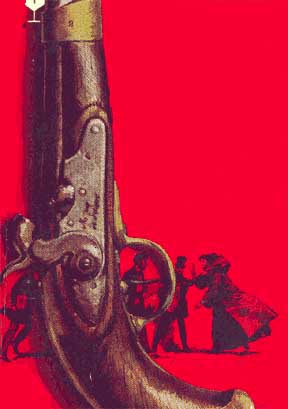
WILL THERE BE LIGHT TOMORROW?
The History of the Greatest Conspiracy
Man Has Ever Known
Part II:

WILL THERE BE LIGHT TOMORROW?
The History of the Greatest Conspiracy
Man Has Ever Known
Part II:
The Inheritors
TO READ PART I: THE
CONSPIRACY
Having established in the first part of this article that there was far more to the Wold Newton event than had
previously been believed, we can now continue with our overview of the activities of some of the most notorious
members of what we have called the "Conspiracy".
Like the Templars and Assassins before them, the Conspiracy is the ultimate example of a secret society (or societies) founded with good intentions in
the the 17th century, aiming to protect the poor and fight the tyranny of monarchs, that progressively turned to
evil and power-grabbing in the following two centuries.
We have seen how the Conspiracy tried,
and failed, in its noble goals, first with the French Revolution, then with Napoleon. What is now left to record
is the "Fall from Grace" from various members of the Wold Newton families, that have heretofore been
ignored, or neglected, by scholars. Perhaps the relative lack of research in this area can be explained by the
understandable dislike at the thought of exposing some of the family's most evil and disreputable branches...
English-speaking members of the New Wold Newton Meteoritic Society have mostly concentrated on a lineage of heroes,
the Claytons, the Delagardies, the Drummonds, the Blakeneys, etc. But as Philip Jose Farmer himself puts it, "every family barrel has its rotten apples." This
is sadly all too true of the Continental European branches of the Wold Newton family: the Monteleones, the Lecoqs,
the Lupins, the Gerolsteins, the Kramms and even the shadowy French-English bastard branch of the de Winters.
8. THE MONTELEONES, OR THE FIRST GODFATHER (2)
After the fateful meeting of Wold Newton of 1795, the Colonel returned to Italy. Soon after, his right-hand man
Albert Lecoq fathered
a child with Anne de Breuil (a descendent of Milady) who grew up to become the nefarious Lecoq de la Perière
of the Black Coats.
The Colonel's bastard son, Mario de Monteleone, created the brotherhood of the Companions
of Silence, whose story was chronicled by Féval in Les Compagnons du Silence.
In 1815, Mario was accused of helping Murat, thrown in jail and allegedly executed in his cell. But we also know
that the very same "trick" was employed by the Conspiracy to make people believe that Cagliostro was
killed in prison in 1795 (See our article, Who Was Nobody?). On the other hand, it may have been a scheme by the devious Colonel to kill Mario before
his own son could kill him, as per the ghastly ritual of that criminal society.
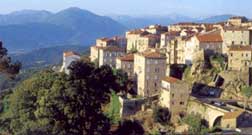 Féval's
diligent research later turned up the story of a meeting of the High Council of the Black Coats held in 1807, soon
after the Colonel's 1806 arrest in Naples. There, another man was hung under the name of Fra Diavolo by General
Hugo, writer Victor Hugo's own father. Like a true Napoleon of Crime, the Colonel convinced the gang to spread
throughout Europe and become a true, international criminal empire, taking over the cities' criminal underworld
like new Cortez and Pizarros. He then relocated their headquarters to the Convent of the Brothers of Mercy near
Sartene in Corsica.
Féval's
diligent research later turned up the story of a meeting of the High Council of the Black Coats held in 1807, soon
after the Colonel's 1806 arrest in Naples. There, another man was hung under the name of Fra Diavolo by General
Hugo, writer Victor Hugo's own father. Like a true Napoleon of Crime, the Colonel convinced the gang to spread
throughout Europe and become a true, international criminal empire, taking over the cities' criminal underworld
like new Cortez and Pizarros. He then relocated their headquarters to the Convent of the Brothers of Mercy near
Sartene in Corsica.
This is when the Brotherhood became first known as the Veste Nere (Black Coats) in Italy, then spread throughout
Europe where they became known as the Gentlemen of the Night and the Black Coats in England, the Habits Noirs in France, and the Rozenkreuz in Germany.
(For more about the Colonel and his activities,
click here.)
9. THE BLACK COATS
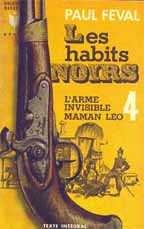 The story of the Black Coats was scrupulously chronicled by Paul Féval in seven volumes, forming a Balzac-like Human
Comedy of Crime, spanning the years 1823 to 1853. In addition, Féval chronicled the story of the English
Black Coats -- the Gentlemen of the Night -- in Les Mysteres de Londres, which took place in the early 1830s, and Jean Diable, which took place in 1817.
The story of the Black Coats was scrupulously chronicled by Paul Féval in seven volumes, forming a Balzac-like Human
Comedy of Crime, spanning the years 1823 to 1853. In addition, Féval chronicled the story of the English
Black Coats -- the Gentlemen of the Night -- in Les Mysteres de Londres, which took place in the early 1830s, and Jean Diable, which took place in 1817.
Colonel Bozzo-Corona was the leader of the Black Coats. He lived rue Therese in Paris, and his neighbors thought
him a saintly old gentleman. The truth is that he ruled with an iron fist over a gang whose size was estimted by
Feval at 2,000 men, women and children in Paris alone!
Only the self-styled "Masters of the First Degree", the mysterious Lecoq, the fake Countess of Clare
(real name Marguerite Sadoulas), Docteur Samuel, the banker J.-B. Schwartz, and Count Corona, knew the Colonel's
true identity. Colonel Bozzo was called the "all-father", or padre
d'ogni in Italian. He called his lieutenants "my dear children"
and they, in turn, called him "father" -- with a note of fear in their voice. The similarities with both
the Mafia and the Freemasonry are obvious.
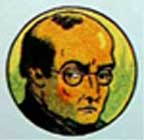 Other "Masters of the First Degree" in the Black Coats likely included "John Devil",
the Marquis of Rio Santo, and later Professor Moriarty in England; the Kramms in Germany; and the Felipones in Italy. More research will undoubtedly turn up more names.
(For more about the Black Coats, click here.)
Other "Masters of the First Degree" in the Black Coats likely included "John Devil",
the Marquis of Rio Santo, and later Professor Moriarty in England; the Kramms in Germany; and the Felipones in Italy. More research will undoubtedly turn up more names.
(For more about the Black Coats, click here.)
As an aside, French researcher René Réouven, the author of several renowned works exploring certain
heretofore unrevealed aspects of the career of Sherlock Holmes, has established that a young Moriarty had spent some time on the continent, first in Sartene, then in Paris, training with the Black
Coats. Certainly, his style was patterned after that of Colonel Bozzo, when he later took over the reins of the
British criminal empire.
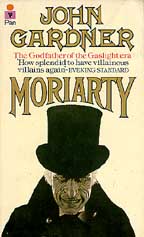 Réouven points out that writer Isidore Ducasse, also known as Comte de Lautréamont --
a pseudonym borrowed from writer Eugene Sue's Latreaumont
(an 1837 gothic novel), and from the words l'Autre Amont
means the "other side of the river" -- wrote in his notorious Songs
of Maldoror, published in 1868-69, the rules governing criminal empires, as
laid out by Colonel Bozzo, and employed by John Devil and Moriarty: "Use prostitution to destroy families," "You must kill to become rich, but until you
are powerful enough to do so, you must first become a thief." And Ducasse
rises to terrifying, visionary heights when he describes a criminal empire as an "octopus
with silken eyes, the head of four-hundred hungry tentacles, sucking the lifeblood of humanity, that accursed and
stupid race."
Réouven points out that writer Isidore Ducasse, also known as Comte de Lautréamont --
a pseudonym borrowed from writer Eugene Sue's Latreaumont
(an 1837 gothic novel), and from the words l'Autre Amont
means the "other side of the river" -- wrote in his notorious Songs
of Maldoror, published in 1868-69, the rules governing criminal empires, as
laid out by Colonel Bozzo, and employed by John Devil and Moriarty: "Use prostitution to destroy families," "You must kill to become rich, but until you
are powerful enough to do so, you must first become a thief." And Ducasse
rises to terrifying, visionary heights when he describes a criminal empire as an "octopus
with silken eyes, the head of four-hundred hungry tentacles, sucking the lifeblood of humanity, that accursed and
stupid race."
10. WILL THERE BE LIGHT TOMORROW?
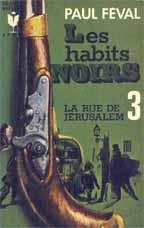 "Fera-t-il jour demain?" Will there be light tomorrow?
was the password used by the Black Coats. It is a sentence of great occult import, clearly derived from masonic
rituals. The correct reply was "De minuit à midi et de midi à
minuit si c'est la volonté du Pere." From
midnight to noon and noon to midnight if it be the will of the Father. Need
we say more? Even the Black Coats' alarm signal, "Il fait nuit!" -- Night is here!
-- when the police is spotted is a sign to remain hidden in the shadows to eventually bring out the victory of
light.
"Fera-t-il jour demain?" Will there be light tomorrow?
was the password used by the Black Coats. It is a sentence of great occult import, clearly derived from masonic
rituals. The correct reply was "De minuit à midi et de midi à
minuit si c'est la volonté du Pere." From
midnight to noon and noon to midnight if it be the will of the Father. Need
we say more? Even the Black Coats' alarm signal, "Il fait nuit!" -- Night is here!
-- when the police is spotted is a sign to remain hidden in the shadows to eventually bring out the victory of
light.
In the end, did the man known as Colonel Bozzo-Corona ever truly die? Paul Féval was about to reveal staggering
secrets, such as the ultimate battle between the Colonel and Dr. Lenoir, the fate of crimelord Saladin and of detective
Clampin (aka Pistolet), the secret of Cavalier Mora's true identity, when he suddenly abandoned the chronicling
of the Black Coats in 1875 after losing all his fortune -- the staggering sum of 800,000 Francs! -- in a financial
scandal linked to the Ottoman Empire.
After this, he only wrote pious religious tracts and even prevented the books from being reprinted! In Who Was Nobody?, we saw that
writers like Alexandre Dumas and Jules Verne willingly cooperated with the Conspiracy on several occasions. It is amply clear that Feval had to be silenced, and so he was. As a
result, the end of the saga of the Black Coats was never revealed. The Companions of Silence had won at last.
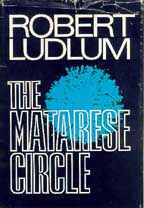 One can only speculate about the descendents of the Monteleones, assuming that Mario is
still not walking the Earth today. In our previous article, we have pointed out the similarities existing between
the Monteleones on the one hand, and the Corleones, whose story was chronicled by Mario Puzo. One should also keep
in mind the striking similarities between the Monteleones and the notorious exploits of the modern Matarese Family, told in detail by writer
Robert Ludlum.
One can only speculate about the descendents of the Monteleones, assuming that Mario is
still not walking the Earth today. In our previous article, we have pointed out the similarities existing between
the Monteleones on the one hand, and the Corleones, whose story was chronicled by Mario Puzo. One should also keep
in mind the striking similarities between the Monteleones and the notorious exploits of the modern Matarese Family, told in detail by writer
Robert Ludlum.
As we shall see below, family alliances between the Monteleones and the Felipones produced the notorious Sir Williams.
And alliances with the de Winters a criminal line that included Fantômas and, in modern times, his Italian descendent Diabolik.
11. ROCAMBOLE & FANTÔMAS
One of the bastard sons of the Colonel was an Italian young man named Paolo de Felipone. Thanks to Victor-Alexis
Ponson du Terrail's research, as presented in the first volume of Rocambole, we know that, in 1812, during Napoleon's great army's Russian retreat, Paolo, then a young
Italian captain, murdered the Colonel Armand de Kergaz. Then, in 1816, Paolo, who had married de Kergaz's widow,
threw into the sea de Kergaz's baby so that his own son may inherit the title and estate.
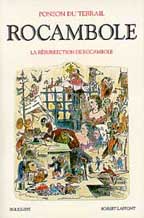 In 1840, de Kergaz's son, now grown up, and also named Armand, came face to
face with Paolo's son, named Andrea. (Note: Possibly a secret homage to Andrea Vitelli by de Felipone?) Three years
later, Armand de Kergaz managed to reclaim his rightful title, and Andrea de Filipone was exiled to England. There,
he joined the Gentlemen of the Night (the
Black Coats), whose leader at the time was is the mysterious Marquis of Rio Santo, in reality an Irishman named
Fergus O'Breane.
In 1840, de Kergaz's son, now grown up, and also named Armand, came face to
face with Paolo's son, named Andrea. (Note: Possibly a secret homage to Andrea Vitelli by de Felipone?) Three years
later, Armand de Kergaz managed to reclaim his rightful title, and Andrea de Filipone was exiled to England. There,
he joined the Gentlemen of the Night (the
Black Coats), whose leader at the time was is the mysterious Marquis of Rio Santo, in reality an Irishman named
Fergus O'Breane.
The story of Fergus O'Breane was told by Paul Féval in Les Mystères
de Londres. O'Breane was a young Irishman whose sister was raped by a British
officer and who was subsequently deported to Australia in 1820. He eventually returned to England in 1830 under
the guise of Marquis of Rio Santo and took over the secret leadership of the Gentlemen of the Night. However, Fergus'
ideals eventually caused him to be killed by a woman. There is no doubt that Andrea's father's connection to the
Monteleones would have automatically facilitated his admission into the secret criminal brotherhood.
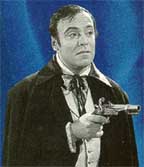 Andrea de Felipone returned to France a year or so later, now calling himself Sir Williams, a member in good
standing of the criminal underground, and launched into a fierce battle against Armand de Kergaz. Unfortunately
for him, de Kergaz was ably assisted by the fearless courtesan Baccarat (Jeanne Charmet), and Sir Williams was
soundly defeated.
Andrea de Felipone returned to France a year or so later, now calling himself Sir Williams, a member in good
standing of the criminal underground, and launched into a fierce battle against Armand de Kergaz. Unfortunately
for him, de Kergaz was ably assisted by the fearless courtesan Baccarat (Jeanne Charmet), and Sir Williams was
soundly defeated.
Ponson du Terrail's research reveals for the first time the existence of a prodigiously gifted young man in his
late teens -- therefore born in the early 1820s -- a former urchin adopted by the evil Maman Fipart, the owner
of a tavern. The name of this young man was Rocambole, and he became to Sir Williams what Lecoq was to Colonel Bozzo-Corona, his spiritual "son,"
heir and right-hand man.
That Rocambole is the bastard son of one of the Wold Newton attendees is unquestionable. All the family traits
are there. However, no one, not Ponson du Terrail, not even Rocambole, ever found out who his true parents were.
This question will never be resolved for certain. We can but speculate that among Rocambole's parents may have
been the adventurer known as "Salvator" and the notorious Josephine Balsamo, daughter of Joseph Balsamo
and of Josephine de Beauharnais. Salvator was the leader of a revolutionary conspiracy known as the Mohicans of Paris, chronicled by Alexandre Dumas in an
eponymous volume.
The story of Rocambole's criminal career in the early 1850s -- including his leadership of the criminal society
called Club of the Jack of Hearts, and his murders of both his adoptive parents, Sir Williams and Maman Fipart
-- and of his eventual redemption after his escape from the Toulon Penitentiary in 1859, is told on our Rocambole page. Rocambole
eventually became a champion of good, fighting for justice as far as India and London.
Curiously, the adventures of Rocambole were also abruptly interrupted in the midst of a saga by Ponson du Terrail's
sudden death in 1871. So ultimately, as was the case with Colonel Bozzo-Corona, we are left to speculate about
Rocambole's ultimate fate...
Rocambole may have fathered several children, and further research will undoubtedly enable us to turn up some of
his descendents. But surely none of his progeny became as famous as the prodigious super-villain known as -- Fantômas.
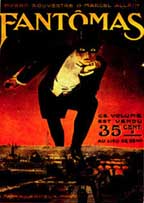 Fantômas
burst onto the international crime scene in the early 1900s, which according to his biographers, Pierre Souvestre
and Marcel Allain, would mean he would have been born circa 1870. We know virtually nothing about Fantômas'
ancestry, except that he once told his nemesis, policeman Juve, that he was his brother, or half-brother. And we
know that Juve was from Britanny, not far from the de Kergaz estates.
Fantômas
burst onto the international crime scene in the early 1900s, which according to his biographers, Pierre Souvestre
and Marcel Allain, would mean he would have been born circa 1870. We know virtually nothing about Fantômas'
ancestry, except that he once told his nemesis, policeman Juve, that he was his brother, or half-brother. And we
know that Juve was from Britanny, not far from the de Kergaz estates.
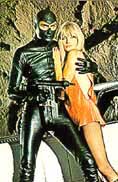 We know that Fantômas claimed some British ancestry. Under the name of "Gurn",
he served as a sergeant in South Africa during the Boer War, where he met his lover, Lady Beltham, a British noblewoman
connected to the Royal Family. And during one of his capers, Fantômas convincingly assumed the personal of
"Tom Bob," a British detective.
We know that Fantômas claimed some British ancestry. Under the name of "Gurn",
he served as a sergeant in South Africa during the Boer War, where he met his lover, Lady Beltham, a British noblewoman
connected to the Royal Family. And during one of his capers, Fantômas convincingly assumed the personal of
"Tom Bob," a British detective.
Fantômas had at least three children on record: his daughter, the spunky Helene, who fell in love with journalist
Jerôme Fandor, in reality her half-brother, Charles Rambert, and the evil Prince Vladimir. There is little
doubt that Fantômas is the ancestor of Satanas, Vampira, Miss Teria, Belphegor, and the Italian super-criminal,
Diabolik.
12. JOHN DEVIL
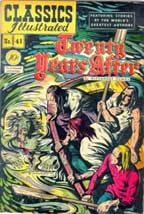 Another character who appears to have inherited the dark mantle of crime of
the Wold Newton family is a mysterious man variously known as Jean Diable, John Devil, Hans Teufel,and Tom Brown.
Even writer Paul Féval, that great chronicler of the Conspiracy, could not ultimately determine with 100% certainty who "John Devil" truly was.
Another character who appears to have inherited the dark mantle of crime of
the Wold Newton family is a mysterious man variously known as Jean Diable, John Devil, Hans Teufel,and Tom Brown.
Even writer Paul Féval, that great chronicler of the Conspiracy, could not ultimately determine with 100% certainty who "John Devil" truly was.
Feval established that Jean Diable was likely born in the late 1790s, and that he was the bastard son of Helen
Brown, an English woman who was married to the Marquis Armand de Belcamp, a French nobleman from Normandy. Speculations
indicate that Helen Brown was herself a descendent of Sir Percy Blakeney. The Belcamps had a legitimate son, Henri
de Belcamp, who may either have been Jean Diable himself, or a twin who looked just like Jean Diable, and was eventually
driven to commit suicide in 1817 when he was about to be arrested for his brother's crimes. This dastardly method
consisting in finding a scapegoat for the Law was a trademark of the Black Coats, and was successfully employed
by Fantômas.
Rio Santo took over the leadership of the British criminal societies after the death of John Devil, and eventually
was succeeded by the notorious Professor Moriarty, who had been recruited and trained by Colonel Bozzo-Corona himself.
Feval could not find out what Jean Diable's ultimate fate was. We hypothesize that his ancestry was derived in
part from the bastard branch of the British de Winters, started by the infamous Mordaunt, the son of Milady and
Lord de Winter's brother, whose life and dramatic death was told by Alexandre Dumas in Vingt Ans Après. And we have previously established
that a member of the de Winters was present at Wold Newton in 1795...
There may be a yet unexplored connection between the Belcamps and the secret society of the Wolves,
which opposed the Monarchy, and then the Revolution, and to which belonged the notorious masked avenger Jean Blanc,
a.k.a. Le Loup Blanc (The White Wolf) and Valentine de Poulduc, a.k.a. La Louve
(The She-Wolf). The Wolves were headquarted
in the forest of Rennes in Britanny, as per Paul Féval's research. And, of course, Sir Percy Blakeney, the
Scarlet Pimpernel, had numerous adventures in Britanny and Normandy...
13. THE LECOQS AND ROULETABILLE
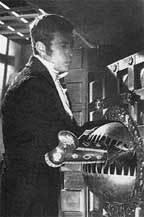 Paul Féval was able to find evidence about a "Lecoq" being a lieutenant of Colonel Bozzo-Corona
of the Black Coats in the 1830s, the son of the Albert Lecoq who had attended the decisive Wold Newton meeting
of 1795, and of Anne de Breuil, a descendent of Milady.
Paul Féval was able to find evidence about a "Lecoq" being a lieutenant of Colonel Bozzo-Corona
of the Black Coats in the 1830s, the son of the Albert Lecoq who had attended the decisive Wold Newton meeting
of 1795, and of Anne de Breuil, a descendent of Milady.
Thanks to Feval, we also know that that Lecoq was raised in Corsica in Sartene -- more connections there -- and
that he ran a private detective agency in Paris in the late 1830s, as a cover to more nefarious activities, likely
in partnership with the notorious Vidocq. Lecoq's criminal career was eventually brought to an end in 1842 by his
past victim, André Maynotte.
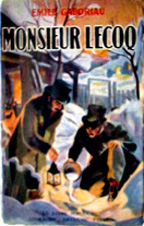 Emile Gaboriau's Monsieur Lecoq, the chronicle of the detective's first case, opens on Sunday, February 20th 1859, indicating
that Lecoq the detective would have been born in or around 1830, which would make him the son of the Black Coats'
Lecoq. Both Lecoqs were schemers and thinkers, the first using his remarkable talents for crime; the second for
the police. Gaboriau reveals that the younger Lecoq, whose family origins are kept relatively murky, made a conscious choice between good and
evil, knowing he could excel at both, when he decided to join the Police.
Emile Gaboriau's Monsieur Lecoq, the chronicle of the detective's first case, opens on Sunday, February 20th 1859, indicating
that Lecoq the detective would have been born in or around 1830, which would make him the son of the Black Coats'
Lecoq. Both Lecoqs were schemers and thinkers, the first using his remarkable talents for crime; the second for
the police. Gaboriau reveals that the younger Lecoq, whose family origins are kept relatively murky, made a conscious choice between good and
evil, knowing he could excel at both, when he decided to join the Police.
We shall postulate that another son of the Lecoq family, a son of Monsieur Lecoq himself, was a man of many names,
likely born circa 1850: as Ballmeyer, he became an international criminal of great repute. As Jean Roussel, he
married American heiress Mathilde Stangerson. He was finally unmasked by his own son under the guise of French
detective Frederic Larsan in 1902, and died three years later in 1905.
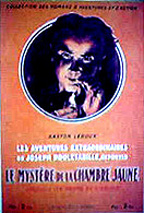 Ballmeyer fathered a son by Mathilde in 1884. That son was entrusted to a religious
orphanage in Eu, near Fecamp, on the western coast in France, and grew up under the name of Joseph Josephin, but
became world-famous as the fearless investigative journalist Joseph
Rouletabille. Writer Gaston Leroux chronicled Rouletabille's numerous,
exploits, including Le Mystère de la Chambre Jaune (alleged to have taken place in 1892 but in reality taking place in 1902) and Le Parfum de la Dame en Noir (similarly taking place in
1905), in which Rouletabille discovered his origins, and defeated hus father.
Ballmeyer fathered a son by Mathilde in 1884. That son was entrusted to a religious
orphanage in Eu, near Fecamp, on the western coast in France, and grew up under the name of Joseph Josephin, but
became world-famous as the fearless investigative journalist Joseph
Rouletabille. Writer Gaston Leroux chronicled Rouletabille's numerous,
exploits, including Le Mystère de la Chambre Jaune (alleged to have taken place in 1892 but in reality taking place in 1902) and Le Parfum de la Dame en Noir (similarly taking place in
1905), in which Rouletabille discovered his origins, and defeated hus father.
The Lecoq destiny of a son championing the law against a criminal father thus repeated itself. Other members of
this family may well have included the notorious Vautrin
(real name: Jacques Collin) who operated in Paris in the 1820s and whose life was chronicled by Honoré de
Balzac.
According to further research by Fortune de Boisgobey, Lecoq had another son, Louis Lecoq de Gentilly, born in
1949, who had five daughters. These daughters married well, and their children all became famous detectives: Jules
Maigret, Frédéric Belot, Monsieur Wens, Gilles, and Prosper Lepicq.
Finally, we should mention here another character of importance: Tabaret, a retired pawnbroker and bed-ridden man
of 45 (in 1859) who is a prodigious armchair detective and Lecoq's mentor. Nicknamed "Tirauclair" (He-Who-Clarifies) by the Police, Tabaret is undoubtedly
related, on the English side, to Mycroft Holmes, Sir Gideon Fell and Nero Wolfe.
14. THE LUPINS
We have previously established the connection between the "Lupin" family and the Buonapartes. We have
also hypothesized that Louis Lupin's father was in fact Carlo Buonaparte, and that he was a brother or half-brother
of Napoeleon.
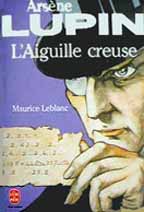 Philip Jose Farmer traces the ancestry of the notorious C. Auguste Dupin --
a laid-back detective who investigated several notorious cases in the Paris of the mid-1840s -- to one Charles
Dupin, himself one of the twins born to Honore Delagardie and Philippa Drummond. Such parentage is possible, but
rather hypothetical, and in fact puzzling considering the obvious rapprochement between Dupin and Lupin.
Philip Jose Farmer traces the ancestry of the notorious C. Auguste Dupin --
a laid-back detective who investigated several notorious cases in the Paris of the mid-1840s -- to one Charles
Dupin, himself one of the twins born to Honore Delagardie and Philippa Drummond. Such parentage is possible, but
rather hypothetical, and in fact puzzling considering the obvious rapprochement between Dupin and Lupin.
Personally, we believe that the mental and physical characteristics obviously shared by the Chevalier Dupin and
Arsène Lupin
point out a common ancestry, and that Edgar Allan Poe made up the name "Dupin" to hide the truth: that
Charles Dupin was, in fact, Charles Lupin, and his son was C. Auguste Lupin!
We also believe that Charles Lupin's real parents were Louis Lupin, and a bastard daughter of the Colonel, Pascaline
de Felipone, sister of Paolo,
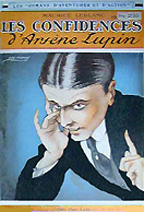 Thanks to Maurice Leblanc's diligent biography, we know that Arsène Lupin
was born in Blois in 1874. His father was a gymnast and petty thief named Theophraste Lupin, the son of C. Auguste
Lupin and Antoinette Corday.
Thanks to Maurice Leblanc's diligent biography, we know that Arsène Lupin
was born in Blois in 1874. His father was a gymnast and petty thief named Theophraste Lupin, the son of C. Auguste
Lupin and Antoinette Corday.
His mother was Henriette d'Andresy. (Curiously, Marcel Allain, one of Fantomas' biographers, lived in Andresy.)
His father was himself a crook, and eventually emigrated to the United States after young Arsene's birth.
At age twenty, Arsene Lupin
(then using the name Raoul d'Andresy) embarked on his adventurous career. He met Josephine Balsamo, from who he
learned the four fabulous secrets of Cagliostro. Lupin was married at least four times, and had several children. (See our Arsene Lupin page for more details.)
Other members of the Lupin lineage include intrepid adventurer Michel Ardan, who was one of the first men to travel
to outer space -- as chronicled by Jules Verne in De la Terre à la Lune and Autour de la Lune,
detective Victor "Toto" Chupin, the globe-trotting adventurer Armand Lavarède, explorer Hareton
Ironcastle,and of course, Nero Wolfe himself.
15. CHAUVELIN AND ERIK
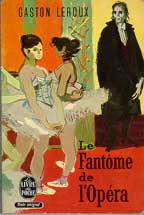 One prominent offspring of the Wold Newton family not mentioned so far is Erik,
whose exploits were recounted by Gaston Leroux in the famous novel, Le
Fantôme de l'Opéra.
One prominent offspring of the Wold Newton family not mentioned so far is Erik,
whose exploits were recounted by Gaston Leroux in the famous novel, Le
Fantôme de l'Opéra.
Leroux tells us that the novel took place circa 1880, and that Erik was born circa 1830 near Rouen, the son of
a mason -- note the casual double-meaning of that sentence, one of Leroux' characteristic literary tricks. Erik,
who was born disfigured, eventually joined a circus, and travelled with gypsies as far as Nijni Novgorod in Siberia.
There is little doubt that he met with Michel Strogoff, and the man we know as Balsamo/Pym/Nemo, who lived in India
under the alias of Prince Dakkar. (See Who Was Nobody?)
Erik then settled in Mazenderan in Persia, but was eventually forced to move to Contantinople, then back to France,
where he became one of the contractors working on the Paris Opera. He used the opportunity presented during the
Commune in 1870 to build himself a private "kingdom" within and below the famous monument.
Erik's famous gold eyes enable us to trace his ancestry to the notorious enemy of Sir Percy Blakeney, Chauvelin.
His family's masonic connections would indicate other lineages as well, yet to be established. His actual year
of birth is unknown, but we would estimate it to be sometimes in the early 1830s.
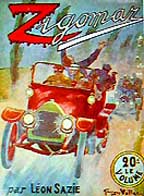 Erik's descendents may well include the notorious Savage family, but closer to us, certainly that of
the mysterious masked criminal king of the gypsies called Zigomar whose exploits were chronicled by Leon Sazie, starting in 1909 -- one year before that of
his more famous "imitator," Fantômas. The name "Zigomar" is interpreted either as an
acronym of Ramogiz, another name for gypsies in the romano tongue, or inspired from the word "tzigane,"
"zingari," etc., also words for gypsies. Other of his descendents may include the Sar Dubnotal, Miramar,
the mad scientist with cat-like eyes, and closer to us, His Serene Higness, Prince Malko Linge, known as S.A.S.
Erik's descendents may well include the notorious Savage family, but closer to us, certainly that of
the mysterious masked criminal king of the gypsies called Zigomar whose exploits were chronicled by Leon Sazie, starting in 1909 -- one year before that of
his more famous "imitator," Fantômas. The name "Zigomar" is interpreted either as an
acronym of Ramogiz, another name for gypsies in the romano tongue, or inspired from the word "tzigane,"
"zingari," etc., also words for gypsies. Other of his descendents may include the Sar Dubnotal, Miramar,
the mad scientist with cat-like eyes, and closer to us, His Serene Higness, Prince Malko Linge, known as S.A.S.
16. THE INHERITORS
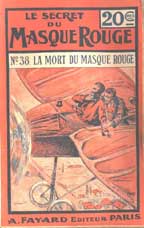 In addition to Arsene Lupin, Rouletabille, Erik, and Fantomas, who became justifiably world-famous,
and others, more obscure, like Zigomar and Masque Rouge (Red Mask), the Who's
Who of the French Wold Newton Families expanded dramatically during the first decades of the 20th Century. The
geometric progression of the genetic mutations triggered at Wold Newton, the break-up of the Conspiracy which had,
until then, kept a tight rein over the underworld, triggered the appearance of numerous champions of good and evil.
In addition to Arsene Lupin, Rouletabille, Erik, and Fantomas, who became justifiably world-famous,
and others, more obscure, like Zigomar and Masque Rouge (Red Mask), the Who's
Who of the French Wold Newton Families expanded dramatically during the first decades of the 20th Century. The
geometric progression of the genetic mutations triggered at Wold Newton, the break-up of the Conspiracy which had,
until then, kept a tight rein over the underworld, triggered the appearance of numerous champions of good and evil.
An exhaustive list would be too long to compile, but these are some of the most famous figures who sprang on the
French stage, and are worthy of further investigations:
Before World War I:
-- The fearless globe-trotter and adventurer Armand
Lavarede, whose exploits were chronicled by Paul d'Ivoi, starting with
Les Cinq Sous de Lavarede in 1894, may
well have been a descendent of the Lupins, d'Artagnan and, possibly, the Foggs.
-- Crime-fighters such as Docteur Mystère, Miss Mousqueterr, and the Chevalier Illusion, whose various exploits were also covered by Paul d'Ivoi, are undoubtedly connected to Nemo/Balsamo
(See our page Who Was Nobody?)
-- The Nyctalope, Jean de Sainclair, whose adventures were reported by Jean de la Hire, is also likely a bastard
son of Theophraste Lupin and the Saint-Clair and Clare families. His half-brother, Jacques Sainclair, is also that
of one of Rouletabille's friend and confidante.
-- The mysterious Sar Dubnotal, whose adventures were chronicled by Norbert Sevestre, could be related to Erik. It is interesting
to remember that, like Sherlock Holmes, Rocambole, Nemo, and Erik, Lupin also spent some time in the Orient, specifically
Tibet, and even his biographer never found out what he did there.
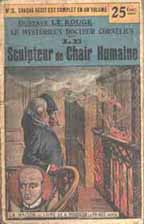 -- The evil Dr.
Cornelius Kramm and his criminal empire, the Red Hand, was thoroughly
investigated by Gustave Le Rouge, and is likely a direct descendent of one of the German Wold Newton families.
-- The evil Dr.
Cornelius Kramm and his criminal empire, the Red Hand, was thoroughly
investigated by Gustave Le Rouge, and is likely a direct descendent of one of the German Wold Newton families.
-- The superhuman Miramar, the Man with
Cat's Eyes, whose adventures were told by Guillaume Livet, remains an enigma to this day. One hypothesizes that
he is related to Erik and, possibly Fantômas, in some fashion.
-- Fearless Martian Explorers Robert Darvel
(whose adventures were chronicled by Gustave le Rouge) and Serge Myrandhal (whose Martian journey was told by Henri Gayar) share ancestries with Michel Ardan, and possibly
Nemo as well.
-- Jules Lermina's Toto Fouinard, a Parisian
boy detective, and his half-brother Tintin,
are likely descendents of the Lupins and the Lavaredes.
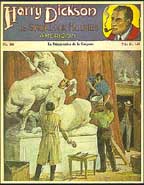 After World War I:
After World War I:
Fighting for justice between the two World Wars, we find heroes such as Judex (biographer: Arthur Bernede), and
detectives such as Gaston Max (biographer:
Sax Rohmer), Todd Marvel (biographer:
Gustave Le Rouge). Two great detectives made their first appearances in the 1920s: Harry Dickson, the so-called "American Sherlock
Holmes," who nevertheless operated mostly in England and on the Continent (biographer Jean Ray), and, in 1929,
the renowned Jules Maigret (biographer:
Simenon).
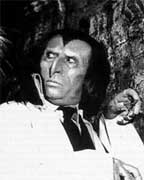 Among the great detectives which followed in their footprints, one should mention
Monsieur Wens (biographer: Stanislas-Andre
Steeman), Frederic Belot (biographer:
Claude Aveline), the bird-faced attorney Prosper Lepicq (biographer: Pierre Very), tough private eye Nestor
Burma (biographer: Leo Malet), and two fearless investigators of the supernatural:
Rene Vergnaud (biographer: Gilles Hersay)
and Teddy Verano
(biographer: Maurice Limat). There was also Tigris (chronicled by Marcel Allain)
Among the great detectives which followed in their footprints, one should mention
Monsieur Wens (biographer: Stanislas-Andre
Steeman), Frederic Belot (biographer:
Claude Aveline), the bird-faced attorney Prosper Lepicq (biographer: Pierre Very), tough private eye Nestor
Burma (biographer: Leo Malet), and two fearless investigators of the supernatural:
Rene Vergnaud (biographer: Gilles Hersay)
and Teddy Verano
(biographer: Maurice Limat). There was also Tigris (chronicled by Marcel Allain)
On the side of evil, we see the emergence of new criminals, such as the dreaded Belphegor (biographer: Arthur Bernede), Mister Flow (biographer: Gaston Leroux), and Fatala and Miss Teria
(chronicled by Marcel Allain), and the aforementioned Masque Rouge (Red Mask).
More research needs to be conducted before we can establish the connections between these heroes and villains and
the other Wold Newton families. However, an first attempt at such research exists. It constitutes the substance
of another article, The Tangled Web, which summarizes and expands on the conclusions elaborated in this article.